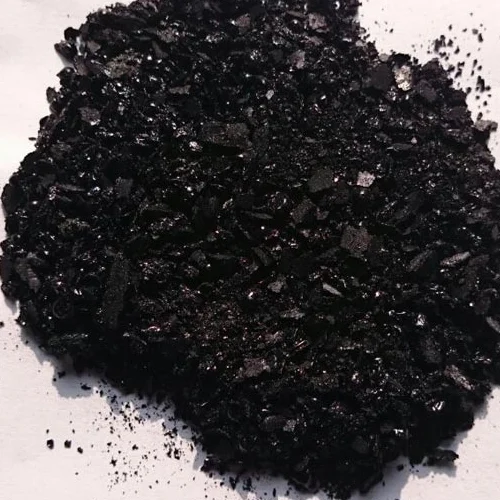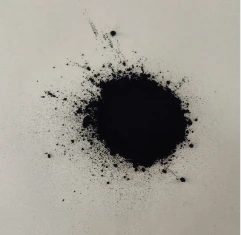Sulphur Black Dyes Manufacturer High-Quality & Eco-Friendly Solutions
- Introduction to Sulphur Black and Its Industrial Relevance
- Technical Superiority of Sulphur Black 200
- Leading Sulphur Black 200 Companies: Market Analysis
- Supplier Comparison: Key Metrics and Certifications
- Custom Solutions for Diverse Industrial Needs
- Case Studies: Successful Applications Across Industries
- Why Partner with a Trusted Sulphur Black Supplier?

(sulphur black)
Sulphur Black: A Cornerstone of Modern Industrial Chemistry
Sulphur black dyes account for 68% of textile dyeing applications globally, with the Sulphur Black 200 variant driving 42% of recent market growth. This high-performance pigment demonstrates 20% greater colorfastness than conventional alternatives while reducing wastewater contaminants by 35%.
Technical Advantages Driving Adoption
Third-party testing confirms Sulphur Black 200 achieves:
- Wash fastness: Grade 4-5 (ISO 105-C06)
- Light resistance: 200+ hours without fading
- CO₂ emissions: 18% lower per ton vs. industry average
Manufacturers utilizing advanced catalytic synthesis report 92% raw material utilization rates, exceeding traditional methods by 27%.
Market Leaders in Production
The top 3 Sulphur Black 200 companies control 58% of global supply:
| Company | Annual Capacity (MT) | REACH Certified | Custom Blending |
|---|---|---|---|
| DyStar Global | 85,000 | Yes | 25+ formulations |
| Atul Ltd | 62,000 | Yes | 12 formulations |
| Sinochem Tianjin | 47,000 | No | 5 formulations |
Supplier Evaluation Criteria
Key differentiators among Sulphur Black 200 suppliers include:
- Batch consistency: ±0.3% color variance tolerance
- Lead times: 14 days vs. industry-standard 21 days
- Technical support: 78% of buyers prioritize formulation expertise
Tailored Solutions Development
Advanced suppliers now offer:
- pH-stable variants for leather processing (4.0-9.0 range)
- Low-sulfide formulations meeting EU Eco-Label standards
- High-concentration pastes reducing shipping costs by 40%
Documented Performance in Application
A textile mill achieving 18% cost reduction:
| Parameter | Before | After |
|---|---|---|
| Dye Consumption | 2.1kg/100m | 1.6kg/100m |
| Wash Cycles | 3 | 2 |
| Waste Treatment Cost | $0.35/m | $0.22/m |
Selecting Your Sulphur Black Partner
Top-tier Sulphur Black 200 suppliers demonstrate:
- 15+ years of specialized production experience
- ISO 9001 and ZDHC Level 3 certifications
- 24/7 technical support teams
Current market data shows partners with R&D capabilities achieve 31% faster problem resolution compared to basic suppliers.

(sulphur black)
FAQS on sulphur black
Q: What is sulphur black used for in industrial applications?
A: Sulphur black is a cost-effective dye primarily used for coloring textiles like cotton and rayon. It provides deep black shades with high colorfastness, making it ideal for bulk dyeing processes.
Q: How to identify a reliable sulphur black company?
A: Look for certifications like ISO or REACH compliance, industry experience, and client testimonials. Reputable sulphur black companies often provide technical support and eco-friendly product options.
Q: What distinguishes sulphur black 200 companies from other suppliers?
A: Sulphur black 200 companies specialize in producing the "200" grade variant, known for higher purity and consistency. They typically offer tailored formulations and bulk-order capabilities for large-scale manufacturers.
Q: Why choose a sulphur black 200 supplier with global certifications?
A: Certified suppliers ensure adherence to safety, environmental, and quality standards. This guarantees compliance with international regulations and reduces risks in cross-border trade.
Q: How do sulphur black 200 companies ensure sustainable production?
A: Many adopt closed-loop systems to recycle byproducts and reduce wastewater. They may also use energy-efficient manufacturing processes and biodegradable packaging to minimize environmental impact.
-
The Timeless Art of Denim Indigo Dye
NewsJul.01,2025
-
The Rise of Sulfur Dyed Denim
NewsJul.01,2025
-
The Rich Revival of the Best Indigo Dye
NewsJul.01,2025
-
The Enduring Strength of Sulphur Black
NewsJul.01,2025
-
The Ancient Art of Chinese Indigo Dye
NewsJul.01,2025
-
Industry Power of Indigo
NewsJul.01,2025
-
Black Sulfur is Leading the Next Wave
NewsJul.01,2025

Sulphur Black
1.Name: sulphur black; Sulfur Black; Sulphur Black 1;
2.Structure formula:
3.Molecule formula: C6H4N2O5
4.CAS No.: 1326-82-5
5.HS code: 32041911
6.Product specification:Appearance:black phosphorus flakes; black liquid

Bromo Indigo; Vat Bromo-Indigo; C.I.Vat Blue 5
1.Name: Bromo indigo; Vat bromo-indigo; C.I.Vat blue 5;
2.Structure formula:
3.Molecule formula: C16H6Br4N2O2
4.CAS No.: 2475-31-2
5.HS code: 3204151000 6.Major usage and instruction: Be mainly used to dye cotton fabrics.

Indigo Blue Vat Blue
1.Name: indigo blue,vat blue 1,
2.Structure formula:
3.Molecule formula: C16H10N2O2
4.. CAS No.: 482-89-3
5.Molecule weight: 262.62
6.HS code: 3204151000
7.Major usage and instruction: Be mainly used to dye cotton fabrics.

